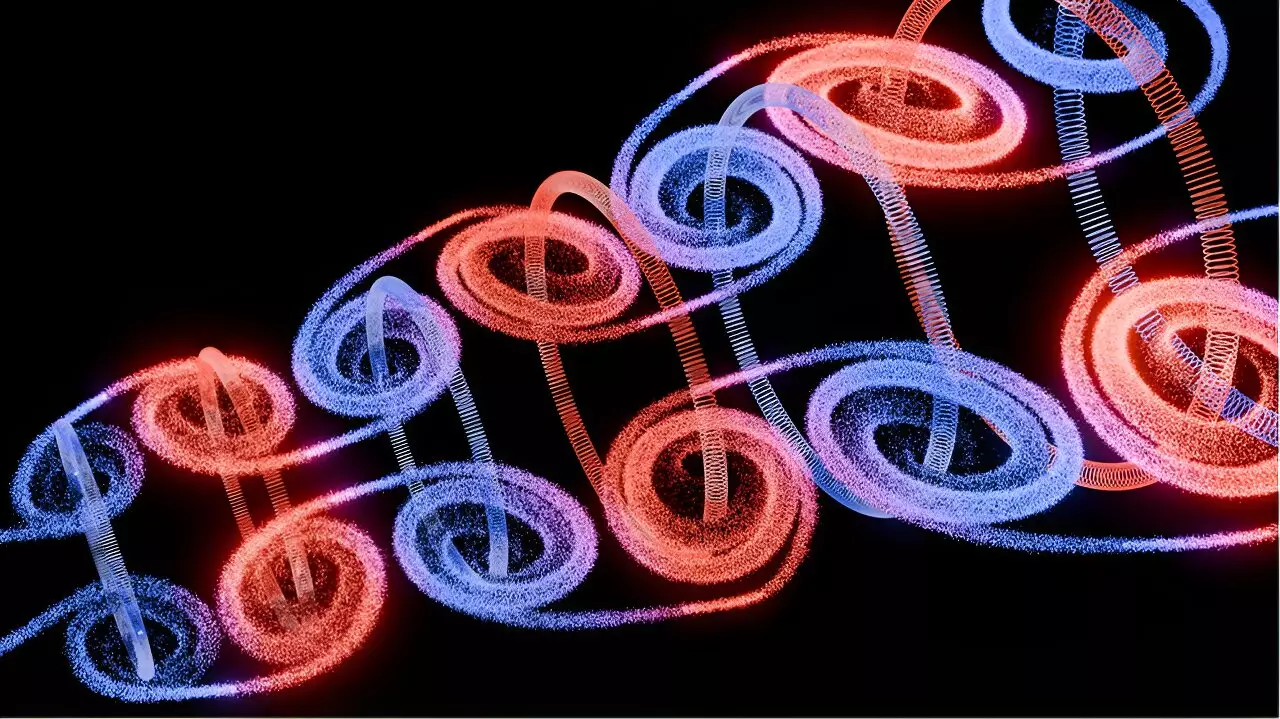A recent study published in Nature Communications by physicists from Singapore and the UK has unveiled an optical analog of the Kármán vortex street (KVS). This optical KVS pulse not only sheds light on the intricate relationship between fluid dynamics and structured light but also opens up a world of possibilities in the field of optics. Lead author Yijie Shen from Nanyang Technological University describes this discovery as a breakthrough in understanding the robust topological structure of skyrmions in condensed matter within the context of light pulses.
Unlike previous research on optical skyrmionic beams and pulses, the nondiffracting supertoroidal pulses (NDSTPs) exhibit a unique feature – they do not succumb to diffraction and can maintain their field configuration over considerable distances. This resilience to diffraction makes NDSTPs ideal candidates for various applications such as light-matter interactions, super resolution microscopy, and metrology. The potential of NDSTPs to revolutionize the field of optics cannot be overstated, as they offer a new avenue for studying electromagnetic skyrmionic fields and their dynamics during propagation.
Skyrmions, initially proposed as a unified model of the nucleon in 1962, have since garnered significant interest due to their resemblance to nanoscale magnetic vortices. In the realm of optics, the ability of skyrmionic field structures to persist upon propagation in KVS pulses presents a unique opportunity to explore directed energy channels for information transfer applications. By drawing parallels between fluid flows and electromagnetic pulses, researchers hope to unlock the potential of deeply subwavelength singularities for metrology and spectroscopic studies in toroidal excitations in matter.
The KVS, a classical flow pattern characterized by swirling vortices, has captivated scientists and artists alike for centuries. From the iconic painting at the Church of St Dominic in Bologna to the catastrophic event at the Tacoma Narrow Bridge, vortex streets have left an indelible mark on both scientific research and human creativity. The intersection of science and the humanities, as exemplified by Theodore von Kármán’s inspiration from a painting of St. Christopher, underscores the profound impact of nature’s patterns on human innovation.
As researchers delve deeper into the realm of light-matter interactions and topological features of pulses, the potential applications of NDSTPs and skyrmionic fields continue to expand. From telecommunications to remote sensing and LiDAR technology, the implications of this optical analogy are vast and promising. By harnessing the power of structured light and fluid dynamics, scientists are paving the way for a new era of optical innovation that bridges the gap between theoretical concepts and practical applications in various fields.
The discovery of an optical analog of the Kármán vortex street represents a significant milestone in the field of optics. By exploring the parallels between fluid dynamics and structured light, researchers have unveiled a wealth of opportunities for applications in communication, imaging, and metrology. As we continue to unravel the mysteries of skyrmionic fields and nondiffracting pulses, the potential for transformative advancements in optics appears boundless.


Leave a Reply